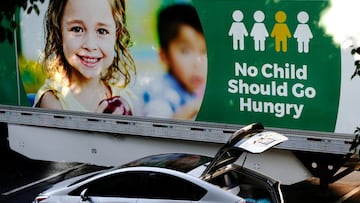Child Tax Credit 2022: who has been most affected by the end of payments?
The expansion of the programme in 2021 provided monthly payments and full eligibility for low-income families, but that came to an end in December.


Last year the American Rescue Plan transformed the Child Tax Credit programme for six short months, offering a monthly direct payment for families struggling with the economic consequences of the pandemic.
The bill nearly doubled the total amount of offer and made the first half of it available across six monthly payments to provide more immediate assistance. Crucially, the full entitlement was made available to low-income households for the first time.
However after Congress failed to agree to an extension before the end of the year, the boosted Child Tax Credit expired after December 2021.
New study highlights the cost
A report authored by the Columbia University Center on Poverty and Social Policy shows how keenly the expiration of the monthly payments has been felt by millions of families. Their study found that in February 2022 there were 3.4 million more children living in poverty than had been in December 2021.
NEW DATA:@Columbia's Center on Poverty and Social Policy now says that 3.4 million more children were in poverty in February than in December 2021.
— Humanity Forward (@HumanityForward) March 23, 2022
Congress must act to reach a compromise to extend the monthly Child Tax Credit.https://t.co/zEeqoUEhtm
In the two months after the payments had stopped more than three million children had slipped into poverty, undoing most of the progress made in the programme’s six-month lifespan. Between July and December of last year the number of children living in poverty was thought to have fallen by around 40%, a staggering improvement in a relatively short space of time.
The cost of the reversal of that trend could be vast. A study from the National Bureau of Economic Research found that an additional $97 billion of funding for the Child Tax Credit expansion could have brought social benefits equating to around $982 billion for the United States.
Loss of full entitlement hits low-income families
While the boosted benefits and the monthly payment structure had given all eligible families the short-term relief that they needed, it was the low-income households who were worst affected by the expiration of the expanded programme.
The Child Tax Credit has a minimum income threshold for full eligibility, meaning that low earners will actually receive less money than wealthier recipients. This distinction was removed by the American Rescue Plan to offer ‘full refundability’ for the first time.
The expanded Child Tax Credit has been dead for almost 3 months now due to Manchin/GOP opposition and as far as I can tell there's no reason to believe that changes. ~4 million kids thrust back into poverty; child poverty rate up ~41% -- totally disappeared from DC discourse
— Jeff Stein (@JStein_WaPo) March 21, 2022
Related stories
However now that it has been removed the New York Times estimates that around a third of children will no longer be eligible for the full amount. That figure includes half of all Black and Hispanic children and 70% of children raised by single mothers.
The failure to agree an extension of the Child Tax Credit boost has not only cost the US economy a huge amount, but also worsened conditions for the nation’s vulnerable children.

